For our finale day, I wanted to venture outside of the hustle and bustle of the city and explore the historic town of Potsdam. After looking at various options, several of my TOP fellows and I decided to take a chance on renting bikes in Potsdam and exploring the city on our own. While this might feel a little overwhelming at first, I assure you this was possibly one of my favorite days in Germany. Touring on a bike, we were able to see so much more than we could have ever imagined on foot. There is even a bike rental station inside the train station in Potsdam. If you choose to rent the bikes at the train station (cost of $12 see link below) make sure you pick up a map. It will tell you the many stops you can make throughout your day. We spent approximately four hours in Potsdam and biked over 15 miles!
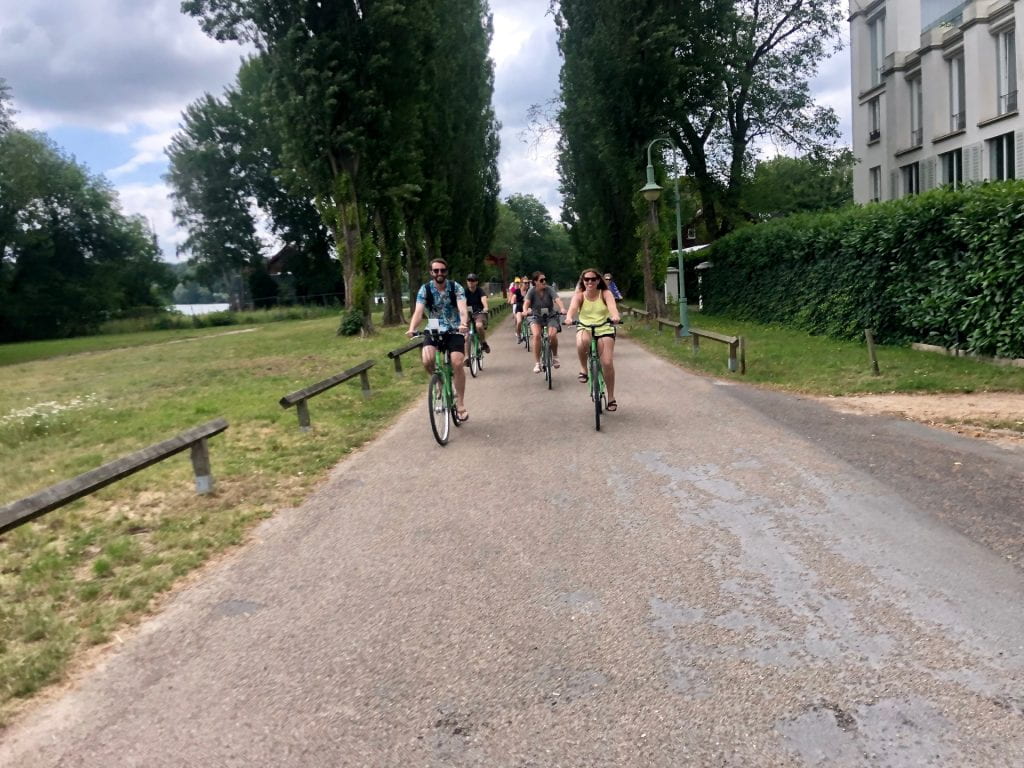
Our first stops included the Truman, Churchill and Stalin villas, which probably shouldn’t come as a surprise to you as we are a bunch of history teachers. What I found interesting was that all three villas were in what was once East Germany. This we were told is due to the fact that Stalin refused to step foot into West Germany. Each of the villas are within a couple miles of each other with Truman’s being the closest (technically located in Babelsberg area of Potsdam). While Truman resided here it was called “The Little White House”, but today is now as the Truman-Villa. Outside of the house you can find a sign that states, “For Freedom- The Truman-House”. This was the location where the three leaders are posed in their famous photograph together overlooking the lake. The Potsdam Conference was held from July 17 to August 2nd of 1945. This location was chosen for the conference as it was occupied by Allied forces, was in close proximity to Berlin and had remained relatively unscarred during the war. It was during this conference, Truman learned of the successful detonation of the atomic bomb in New Mexico, as part of the Trinity Test. It was while in Germany that Truman decided to share news of the bomb with Stalin, even though Stalin was already aware of the project due to Soviet spies within the United States. During this conference, the three leaders decided how to negotiate terms for the end of WWII and to discuss plans for occupation of Germany after their unconditional surrender earlier in May. Other major goals of the Potsdam Conference included establishing a postwar order, developing a peace treaty and determining how to combat the effects of war on the people of Europe. Now if you are using the “Finest Bike and Paddle Tours” map (linked below), the Truman-Villa is considered stops 22 and 23, however, we took a right directly out of the bike/train station and started here. We then worked our way backwards through the following:
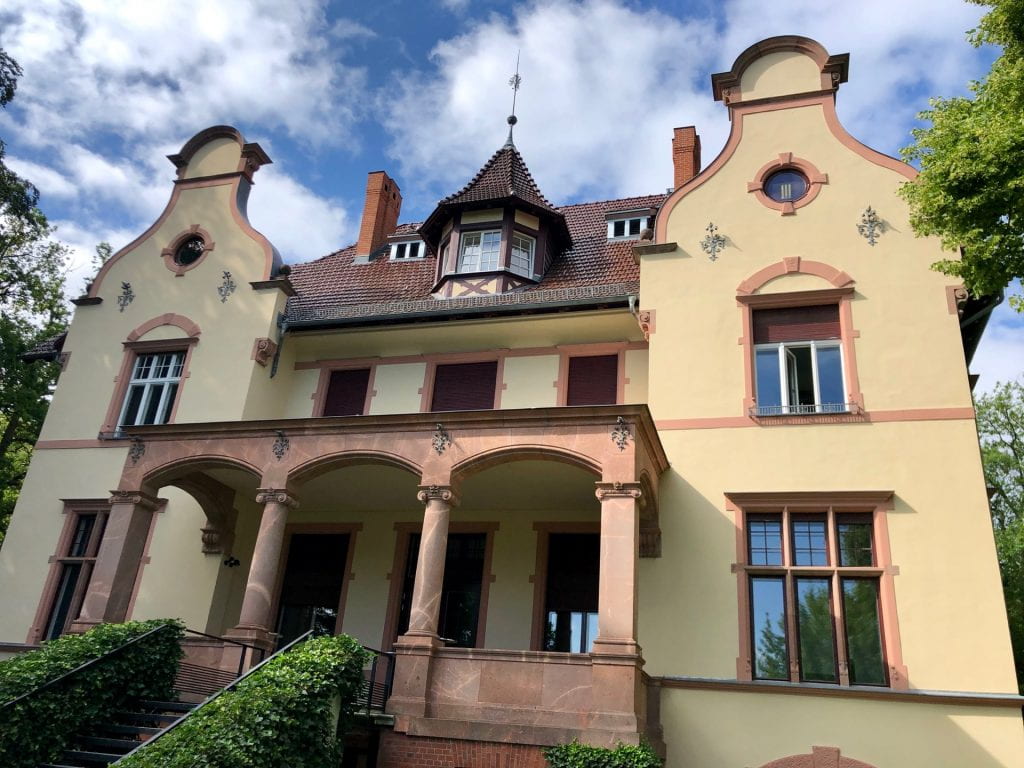

(Truman’s Villa – Station 22 & 23)

(Churchhill’s Villa – Station 21)
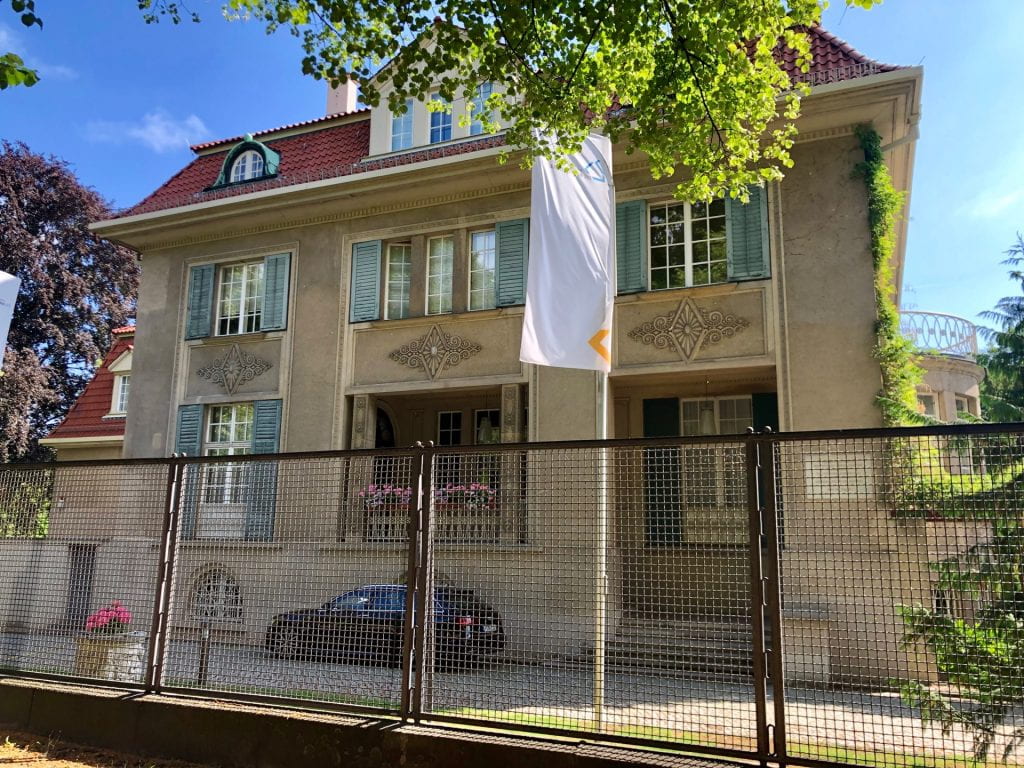
(Stalin’s Villa – Not Marked on the Map as a stopping point but it on your way to the other locations)
One of the best parts of biking through the city was driving through the neighborhoods and passing the quaint German streets. Beautiful homes line the lakes that are formed by where the Nuthe River and Havel River intersect. I found it fascinating how much we traveled back and forth between East and West Berlin. One such place was Schloss Glienicker (Glienicke Palace and Park- Marker 18). This is located in what was once territory of West Berlin. The park Glienicke was the farthest point one could reach while driving without crossing the border into the East. This was first built in the early nineteenth century by the Prince of Prussia and the park itself has a variety of unique buildings and even a broken bridge that you can explore. Behind the palace and park you will find the Hunting Lodge (Station 19) also known as the Klein Glienicke Hunting Lodge. You can’t miss it as it is most recognizable by the massive green gate. While the palace was in the west, the Klein Glienicke Hunting Lodge was located on the former death strip in the East. Built in the early nineteenth century by Fredrick Wilhelm for his summer residence, this hunting lodge served many purposes including a military hospital, a wallpaper factory and even an orphanage.
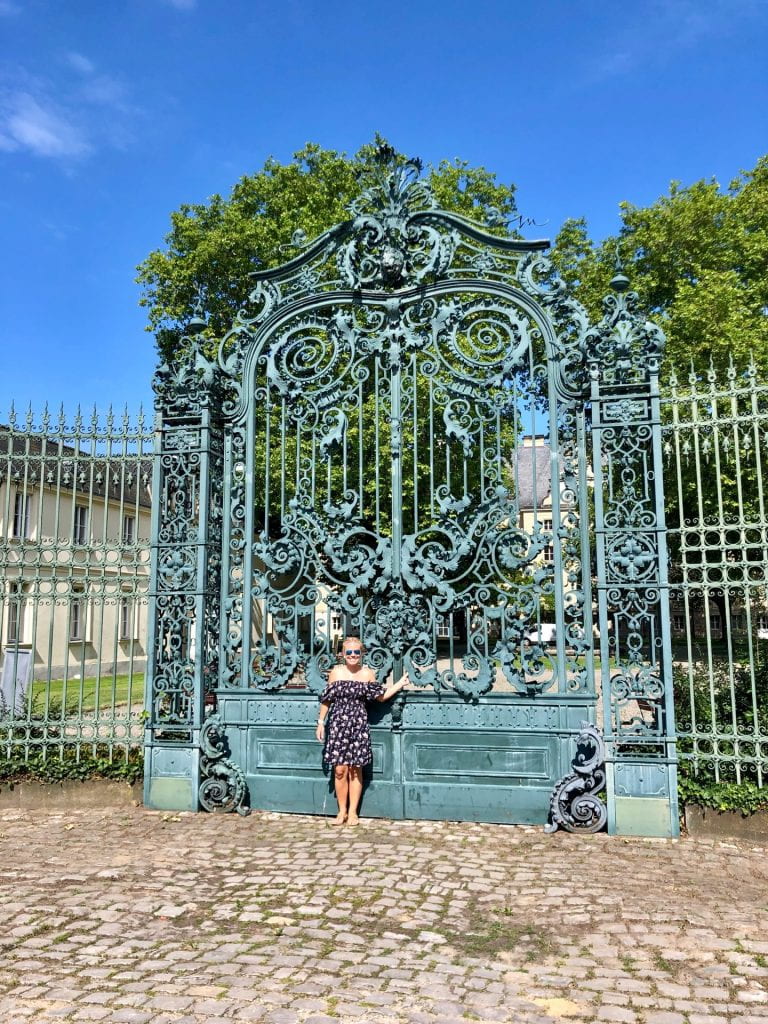
When the wall was built, the area of Klein Glienicke was part of the GDR, and many people came here to escape since it was located so close to the border. In fact, many homes were torn down to strengthen the border. This didn’t stop two families who successfully dug tunnels during the summer to help successfully escape to the West. Eventually, after years of a declining population due strict border security Klein Glienicke became somewhat of a ghost town. When Germany was reunified in the early 1990’s people began moving back to this secluded area. We found many cottages and neighborhoods throughout that show the resilencey of the German people to restore the area to what it once was.

After snapping a few photos in front of the gate, we headed off to the infamous Glienicker Bridge (Station 17) better known as the Bridge of Spies. The view from this bridge allows visitors to really admire the culturally points in Potsdam. From the southern side you can see the Palace and on the northern side you can view historical churches. This bridge was made famous during the Cold War. After WWII, when Germany was divided and East Germany was cut off from the West, the bridge was primarily used by Allied soldiers as a link between their Berlin sections of the city. The bridge became known as the “Bridge of Spies” and it was primary used to exchange captured agents between the US and the USSR.
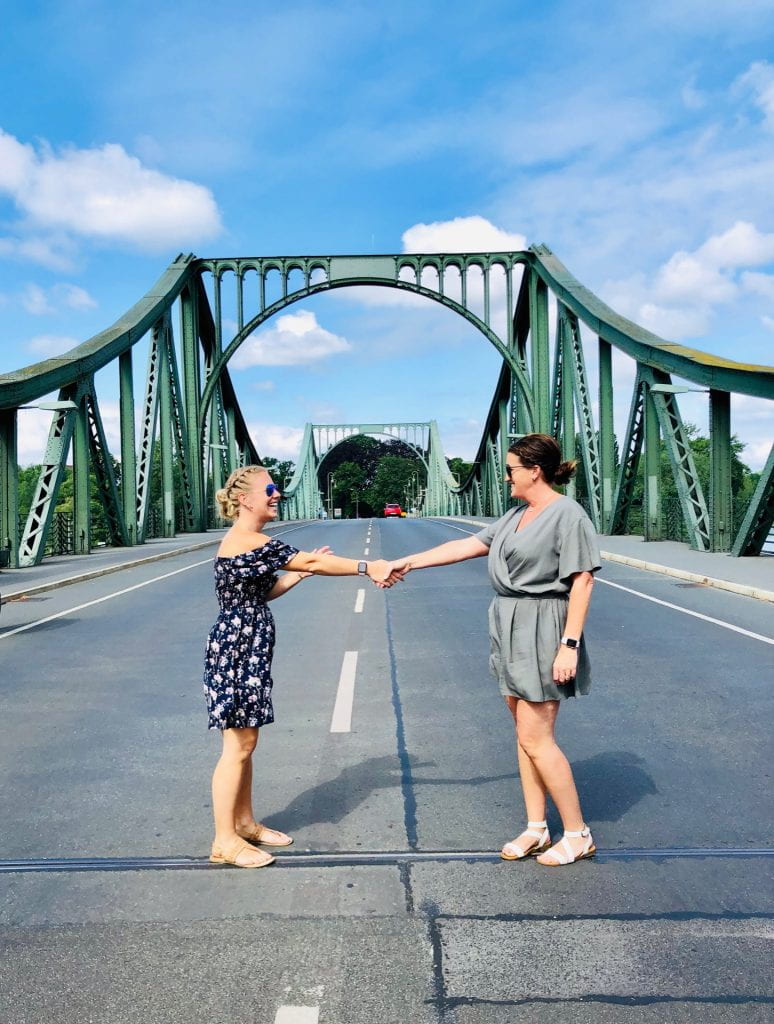
The first prisoner exchange on the bridge took place on February 10, 1962 when the Americans released Rudolf Abel, who was convicted of spying for the Soviets, in exchange for Gary Powers a pilot of a U2 plane which was shot down in 1960. Several other swaps of agents took place on this bridge over the next several decades, which only added to the spy legacy the bridge still has today. After the wall fell the bridge became a symbol of peace and reunification for the country of Germany.
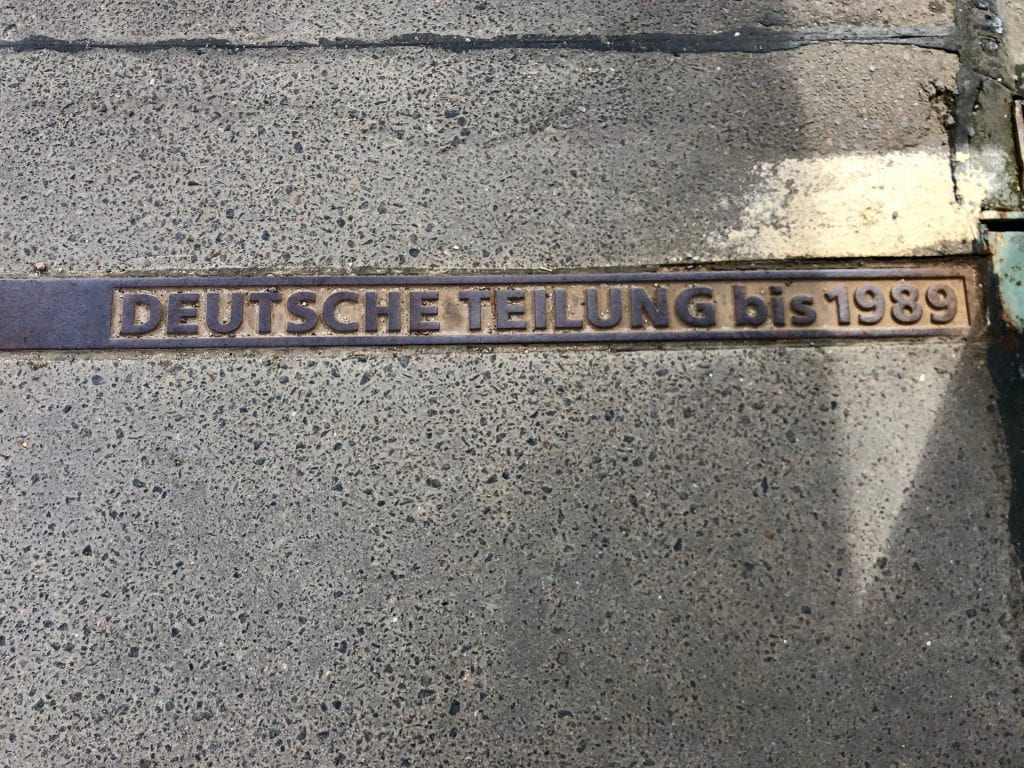


As we hopped on our bikes we headed to the Sanssouci Palace (Station 9-12) several miles away. This palace was built by Friedrich the Great as a summer retreat. Completed in 1747, this was not only a summer palace, but his favorite place to stay, especially with his beloved dogs. One of the unique features of this palace are the windows which come nearly to the floor. Peaking inside the windows are massive paintings and circular tables that the King made famous during his parties.
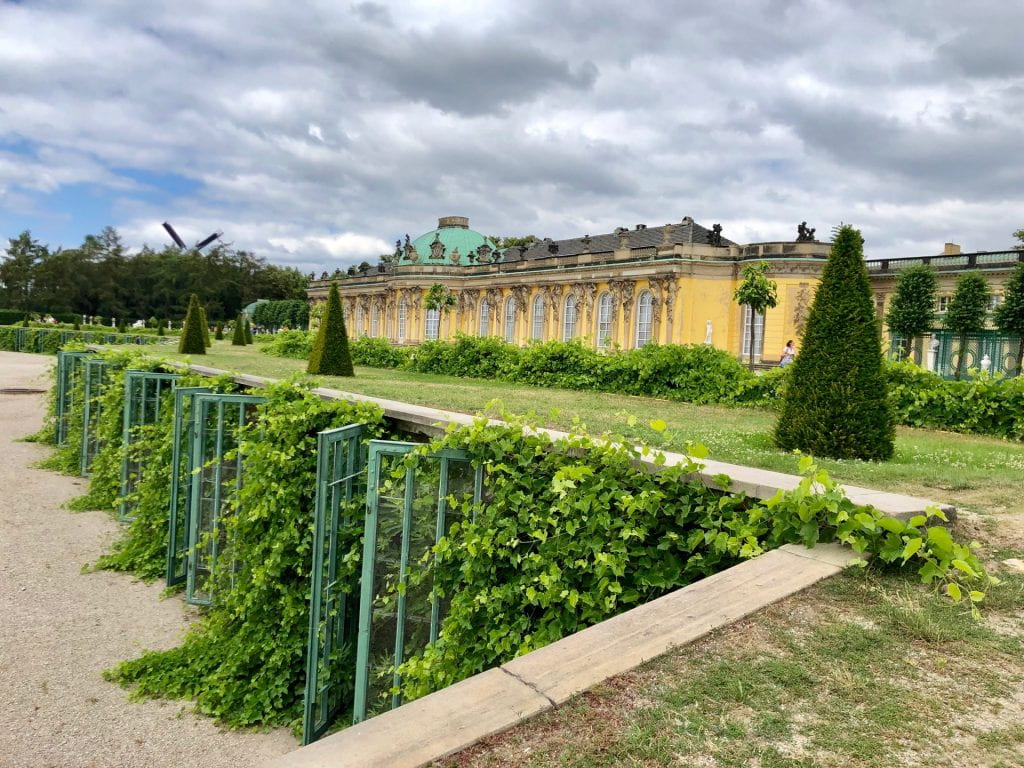

Visitors are allowed to explore the outside of the palace as well as the gardens. Guided tours of the inside of the palace are available as well. One of my favorite parts of the palace were the trellises with the grape vines dangling down. The Summer Palace was eventually opened as a museum by Wilhelm I in 1873 and was one of the very first palace museums in Germany. The Summer Palace escaped damage during WWII, although several items that were removed from the palace during the war were never found.
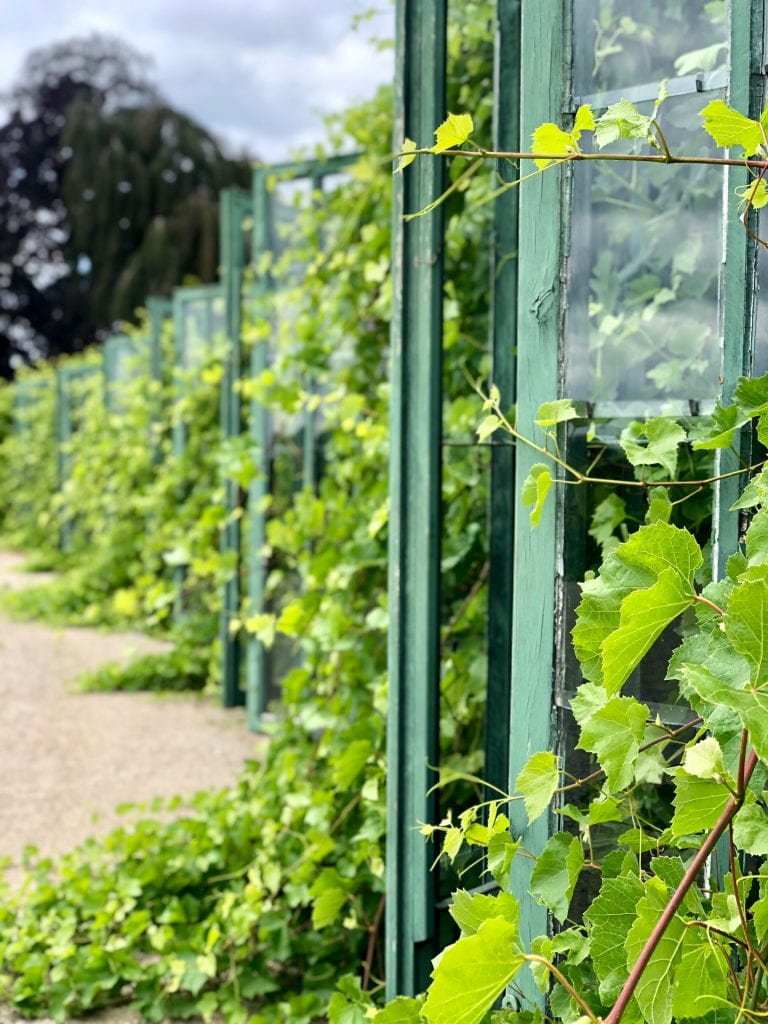
Across the park from the Summer Palace is the exquisite Neues Palais (New Palace). This is known as the Versailles of Germany. Although we didn’t have the opportunity to visit this site due to time, if you plan a whole day in Potsdam I highly recommend it. The entire complex, both palaces and the garden in-between are a UNESCO World Heritage sight, which have been recognized for their outstanding architecture and landscaping.
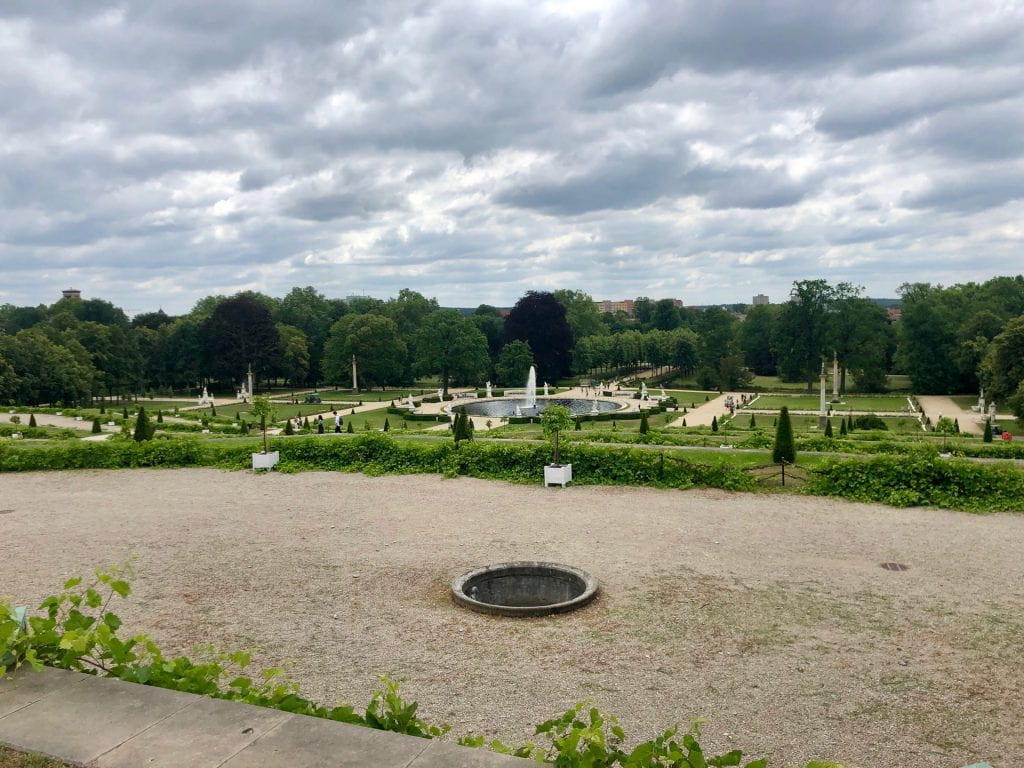
As we headed back to the train station on our bikes we stopped at the Brandenburg Gate and the Baroque Inner City (Station 4). Looking through this gate and down the city streets helped me to envision what this city would have looked like in the mid-1700’s. The Brandenburg Gate of Potsdam actually had two architects, the first designed the front of the gate facing the city and the second, his apprentice, designed the part of the gate facing the fields.

We ended our tour by biking around the Alter Markt (The Old City Hall Marker 1). At the end of WWII this part of Potsdam was nearly destroyed by British bombers. The GDR decided to tear down and reconstruct this building along with the St. Nicholas Church nearby. However, many updates have been made to rid the building and surrounding area of the GDR plain design style. This is one of the spots where we went off of the map and instead chose to bike past the Potsdam Museum, as well as the Film Museum Potsdam. We also biked through the four city blocks that are considered the Dutch Quarter. I could have spent hours exploring the exclusive shops, cafes and restaurants in this area. If you want to travel to Berlin, but don’t want to stay in the city, I highly suggest this area.
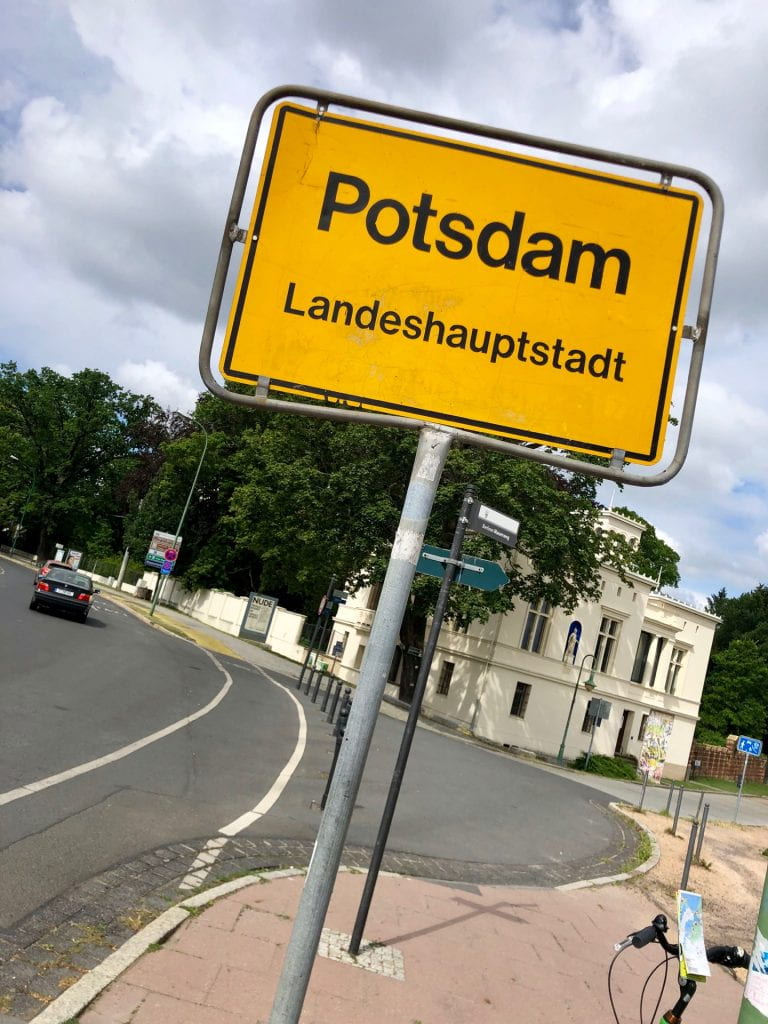
Since we rented the bikes at the train station it was extremely easy to return and hop on a train back to Berlin. Our evening ended with our final TOP Fellow dinner at the renowned Prater restaurant. This outdoor restaurant and cafe was established in 1852. Surviving major bombing raids of WWII, the restaurant remained opened through GDR times as it was considered a government funded cultural institution. Interesting though, unlike most businesses under communist rule, Prater was allowed to remain in private hands. It was revitalized after the fall of the wall and is now a popular spot for locals. It was here that I had the best apple strudel of the trip and everyone’s meal was outstanding. I absolutely had food envy when I saw the pork schnitzel that one of my friends order – it was nearly as big as the plate.

To say my time in Germany was spectacular is an understatement. The experiences I had, the individuals that I met and the history that I was able to learn will truly change how I teach contemporary Germany. I am so grateful to the Transatlantic Outreach Program and its many sponsors for supporting this experience for teachers. I know the relationships that I have formed will last throughout my career and I look forward to educating others about the opportunities this organization provides. After some much needed R&R I look forward to my next #teacherswhotravel experience in Washington D.C at the United States Holocaust Memorial Museum – I hope you’ll follow me on that experience this July!

Bike Rental Link: http://potsdam-per-pedales.com
Free Audio tour for Biking Potsdam: App Store – Hearonymus